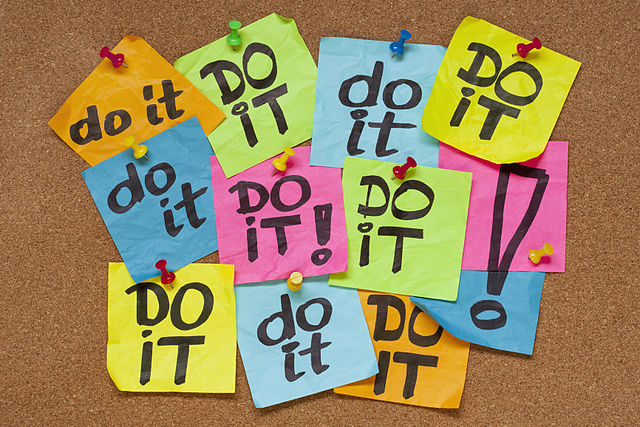It’s almost July. Many of the projects that I set out to accomplish at the beginning of the year are still, well, waiting to be accomplished.
Sound familiar to you? Read on for research-based tips on how to tame the procrastination demon.
Rule #1: Commit to fixed deadlines that limit your freedom
“That’s crazy,” you might be thinking, “why should I limit my freedom?”
Because introducing time constraints will increase your productivity.
Don’t get me wrong. I like freedom. I especially like the freedom to choose which projects I will work on. But that leads to a paradox. If I can work on anything I want, then what shall I work on right now?
Psychologist Barry Schwartz notes in The Paradox of Choice that having too many alternatives leads people to defer or avoid decisions. Why? Because choosing the best alternative becomes difficult or impossible as the number of options increases.
Here’s a case in point. At a supermarket in Menlo Park, California, shoppers were given an opportunity to taste new jams. Some could choose from 6 types of jam while others could choose from 24 types. The results: 30 percent of customers with 6 choices bought the jam, while only 3 percent of customers with 24 choices bought the jam.
I’ve learned the hard way that too much time freedom is not conducive to productivity. Without fixed deadlines I have too many options for how to spend my time. It’s like being presented with 24 types of jam around the clock. I revert to the status quo and do the easy thing—I check email, do administrative work, or I jump from project to project without making significant progress.
The moment I commit to a deadline, I feel a spur to action. I dig my heels in and focus my attention. My colleague Bob Graham used to call it The Wall. A project could sit on the back burner for days or weeks until The Wall comes into view. The Wall looms larger as the deadline approaches. There’s no avoiding it. It looks like we’re going to crash right into it. And then the project team pulls together and burns the midnight oil to meet the deadline.
We all know this behavior from our student days—we called it the Term Paper Syndrome (or business as usual). While it may not be the ideal process for completing a project or a paper, it works!
Projects and term papers have fixed deadlines. That’s why we get them done.
Rule #2: Communicate your deadlines in advance
After you’ve set yourself a deadline, take one more step to dramatically increase the chance that you will stick to the deadline—tell other people about it! Once the deadline becomes public, the proverbial cat is out of the bag and your reputation is on the line.
By telling people about your plans, you make a kind of social commitment contract. Your desire to look good and honor your commitments in front of your peers will keep you going. Commitment contracts are effective for changing any kind of behavior—not just for overcoming procrastination. Check out the article on bright lines and commitment contracts.
Dan Ariely at Duke University uses the power of public commitments to help his students avoid procrastination. He lets his students choose their own deadlines for three term papers they must write each semester. The only requirement is that they must announce their deadlines during the first week of the semester. If they miss a (self-imposed) deadline, they get points taken off their final grade.
The rational decision would be to choose the last day of the semester as the deadline for all three papers, i.e., to opt for maximum freedom. However, most of Ariely’s students voluntarily choose earlier deadlines. The students seem to know their own procrastination demon—they limit their freedom in order to spur themselves to action. According to Ariely, it works. Students who commit to an earlier deadline earn higher grades.
Watch Dan Ariely describe how self-determined deadlines helped his students overcome procrastination:
What do you do to overcome procrastination? Please leave a comment and share your stories.
References
Ariely, D. (2010). Back to School #2.
Iyengar, SS. & Lepper, MR. (2000). When choice is demotivating: Can one desire too much of a good thing? Journal of Personality and Social Psychology 79(6), 995-1006.
Schwartz, B. (2004). The Paradox of Choice: Why More is Less. New York: Harper Collins.
Image courtesy of Vic / CC BY 2.0



